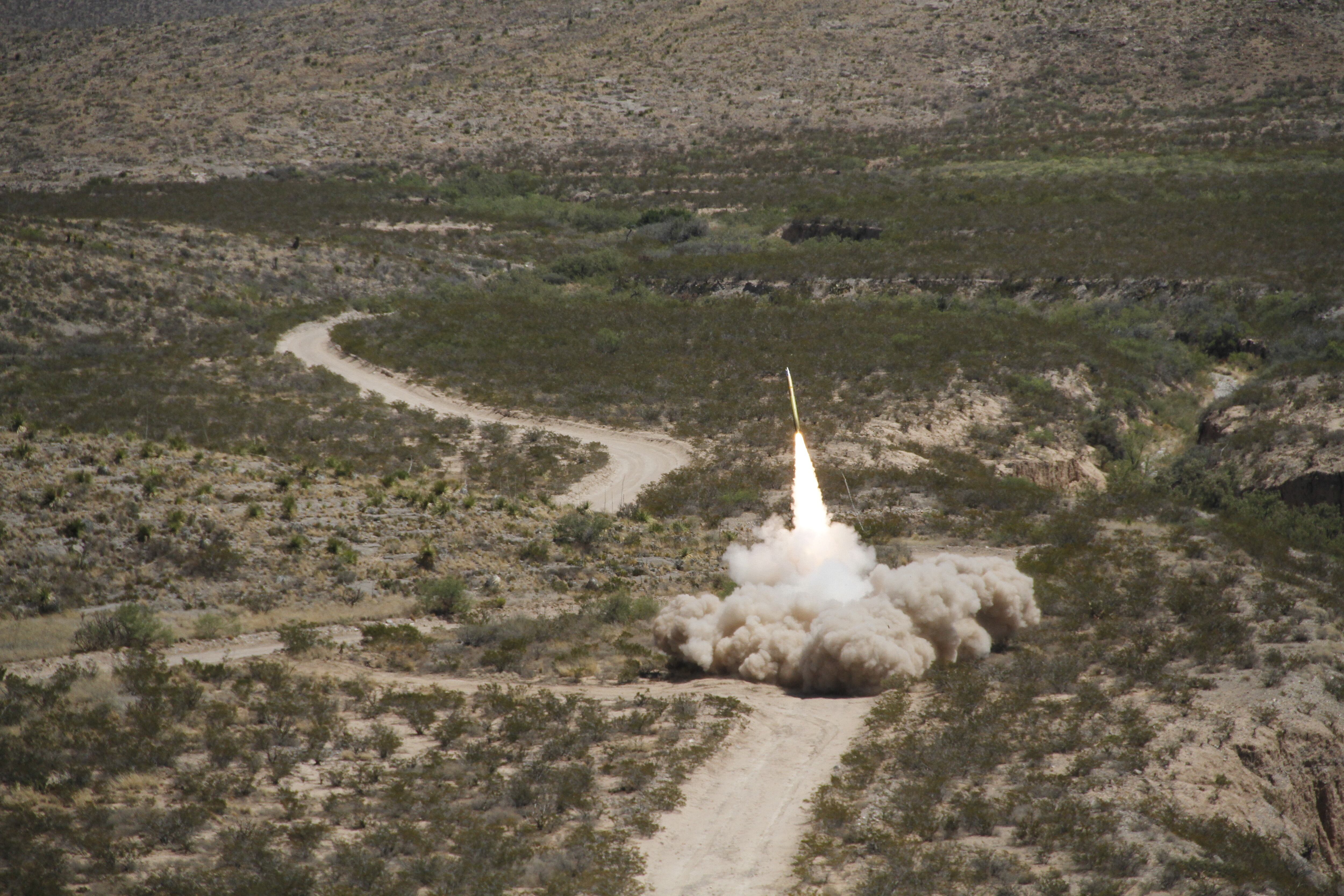WASHINGTON — The demand for weapons in Ukraine is not slowing down, and its impact on the U.S. Army is clear, given the fact that munitions are coming straight from the service’s stockpiles.
Restocking the American ground force while continuing to help Ukraine’s fight off a Russian invasion partly comes down to decisions made by Doug Bush, the service’s chief of acquisition, logistics and technology.
Bush has several priorities that will guide his efforts, including quickening program execution and equipment delivery to American troops, as well as securing the defense-industrial base’s supply chain.
In an interview ahead of the Association of the U.S. Army’s annual conference, Bush told Defense News what it takes to ramp up weapons production for both the Army and partners in Ukraine. This interview was edited for length and clarity.
How has the U.S. response to Russia’s invasion of Ukraine affected Army acquisition, the rebuilding of stockpiles and the industrial base? What has the service scaled back in recent years that it now needs to ramp up?
Moneywise, the Javelin missile. I think we have 1.2 billion; we have to get on contract to replenish what was sent [to Ukraine].
But big picture, what we’re doing there kind of echoes across. So if you look at the Javelin, the Stinger [air defense weapon], the Guided Multiple Launch Rocket System and 155mm [artillery systems], those are right now the focus areas for increasing production rates — doubling or tripling in some cases over the next year. That’s been a huge amount of work and focus with industry on what’s possible there and how fast [contractors can] do it [to] try and get ahead of the demand. We’re anticipating because there’s several unknowns here. The known is replacing what we’ve provided, but the unknown is future things we send and replacing those.

The second part is supporting Ukraine, when we send them stuff we have — that’s presidential drawdown — [and then we] have to restock ourselves. And there’s also building up those production lines to support foreign military sales, of which we’re starting to get much more demand for those systems.
Before the war, the system that was most in demand was the Patriot [air and missile defense system]. That was already underway: a ramp-up to more than 500 missiles because of, largely, FMS demand. So these other efforts are similar. The 155mm artillery is still mostly produced in the organic industrial base, so that’s improving our factories and ammunition plants. But a lot of this other stuff — Javelin, GMLRS — those are all [coming from] private facilities, so we’re working with industry to increase those production rates. We’re using a lot of COVID-19 contracting lessons learned here of how we can go much faster than normal.
How much faster?
If you look at the Office of the Secretary of Defense standards, normally within a year of receiving funding, they expect you to have 80% of it obligated, which requires [awarding] contracts. In this case, most of the [stockpile] replenishment money we’ve gotten — a lion’s share of it, like $5 billion of it in the last two months — by the end of September, we’re going to be already at 60% obligated.
RELATED

For example, Javelin, normally we would do one giant contract a year because it’s more efficient — one big contracting action. We’re breaking those up in some cases now to do multiple contract awards because we want to be able to put the funding we have on contract and not wait until the normal, more convenient time.
It’s a lot of effort to use different techniques. We’re using waivers for sole source, for example. Using all these tools, we can make exceptions to go faster. We’re using them for ammunition just like we did with the COVID-19 vaccine.
In the first round of night court, the Army cut from programs that didn’t align with its new modernization priorities. In fiscal 2018 some things were scaled back or cut, like quantities of Guided Multiple Launch Rocket Systems and a new Army watercraft program. In what instances has the Army had to correct its course because of current events?
The folks who were making those decisions at the time had the information they had and the priorities they had, and they did what they thought was right. I don’t second guess any of those decisions.
So they did all the right things, and this is a constant drill every year with the budget cycle. It’s kind of like there’s always been night court; it just, in those years, got pulled up to a higher level. But those same trade-offs you have to make. Often, systems that are performing well and are in high levels of production are looked at as sources to pay for other things. And sometimes it’s a reasonable risk to take.
But I sometimes worry a little; the reward for getting to full-rate production should not be that it becomes a source to pay other bills [in a tight budget cycle]. The goal of full-rate production is to produce something at a scale that’s more economically efficient. And you can ramp up.

To be fair on the GMLRS question, we never went to a level that was so low that we couldn’t do what we’re doing now, which is dramatically ramp up quickly. So [with] GMLRS and Javelin, they were not super hot production lines; they were pretty warm and had been much easier to ramp up, [as opposed to] where we went hard cold on Stinger.
And actually, regarding 155mm artillery, if you look at recent budget years, it’s been pretty thin. That’s a bigger, more difficult ramp-up — to go from life support levels to “triple this” tomorrow morning. That’s the art: Where’s the breakpoint to allow for if a war happens, for example, to crank up fast?
So watercraft, that was one that in previous budget cycles got adjusted somewhat. But again, they were making the calls for the right reason. So someday somebody’s going to be looking at the ones I made and say: “Well, those were wrong.”
The Army is taking spare parts to build about 1,000 Stinger missiles. Talk about that in more depth.
We have stocks of Stinger missiles. The actual work is being done at McAlester Army Ammunition Plant in Oklahoma. You might have missiles that have expired because one component has aged out, but that doesn’t mean the rest of the components aren’t good.
So what the workers are doing there — it’s going to be great. We’re going to take old missiles, and just take the good parts and produce some new rounds that we can pad our stocks with. About 1,000. We’re going to be able to do that in less than 18 months, which is much faster than building a new one.
The Army only sent around 500 Stingers; the Marine Corps sent more. But this will pad our stocks quite a bit while we’re increasing the Stinger production rate to 40 or 60 a month.
So two efforts at the same time: coming in on Stinger, and then at some point is the new program to have a future missile. We’re going to keep building Stingers for a while before we get to the new missile to make sure we have the capability to make them.
Is the Army working with foreign manufacturing sources to build more 155mm ammo?
There are multiple overseas sources for several hundreds of thousands of rounds for Ukraine. So actually it’s really a good example. The United States doesn’t have to do everything, we can use our allies [and what] they have. That’s actually good because then you’ve got multiple production lines. If something goes wrong at one of ours, we’ve got some backup. That’s a good lesson learned.
Jen Judson is an award-winning journalist covering land warfare for Defense News. She has also worked for Politico and Inside Defense. She holds a Master of Science degree in journalism from Boston University and a Bachelor of Arts degree from Kenyon College.





